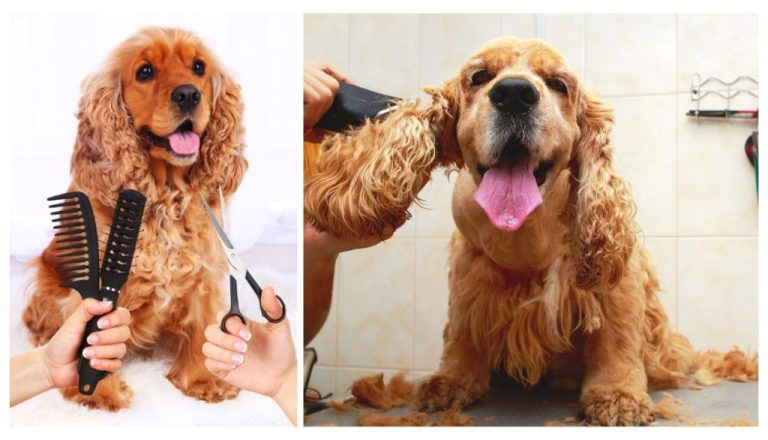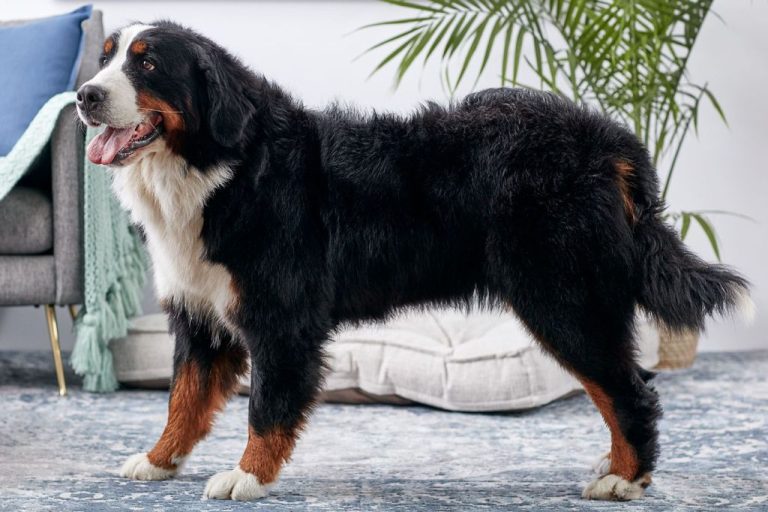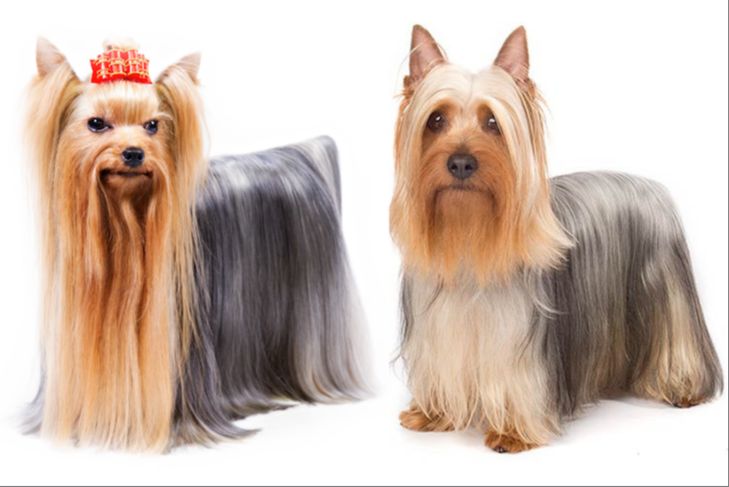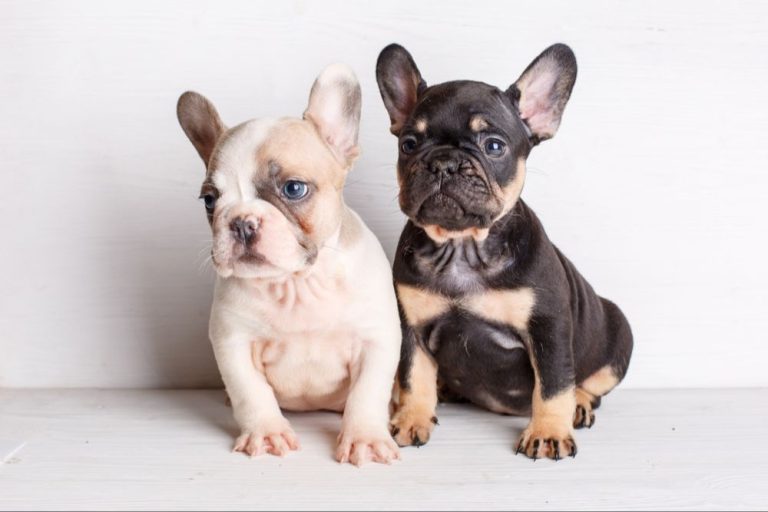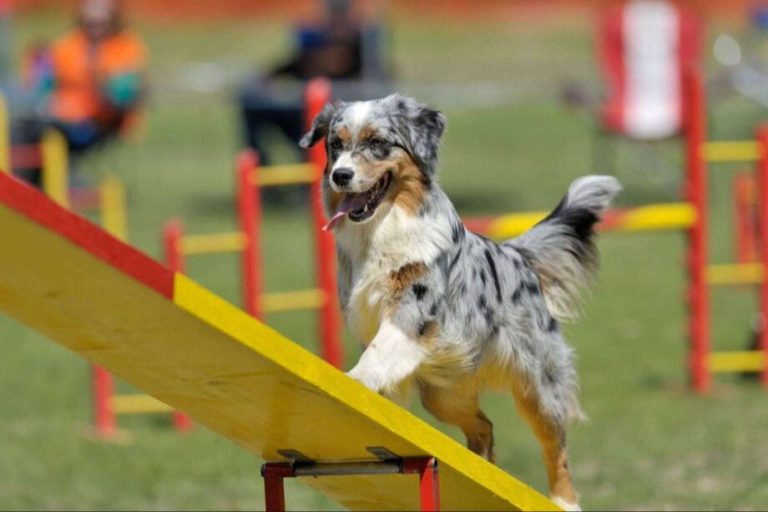Great Dane: A Gentle Giant With Unique Characteristics
The Great Dane is one of the world’s tallest dog breeds, known as a “gentle giant” for its imposing size and friendly temperament. Originating in Germany, Great Danes were bred to hunt wild boar and deer in the late 16th century. They are a mix of old English Mastiff and Irish Wolfhound breeds. Standing 28-34 inches tall and weighing 100-200 pounds, the Great Dane has a muscular, rectangular build with long legs, large paws, and a regal, square head. Its short, glossy coat comes in various colors like fawn, brindle, black, blue, harlequin, and mantle. While massive in stature, Great Danes are sweet, loyal pets when properly trained and socialized. They thrive on human companionship.
Size
Great Danes are among the largest dog breeds in the world. The average height for a Great Dane is between 27-30 inches for females and 30-32 inches for males. Females typically weigh between 100-130 pounds while males weigh between 130-180 pounds on average [1]. However, some Great Danes grow larger than average.
The tallest Great Dane on record was Zeus from Otsego, Michigan, USA. According to Guinness World Records, Zeus stood an incredible 1.046 meters (3 ft 5.18 in) tall [2]. Zeus sadly passed away in 2014 at just 5 years old. The heaviest Great Dane on record was Zorba, who weighed 142.7 kg (315 lb) in November 1989 [3].
Coat and Colors
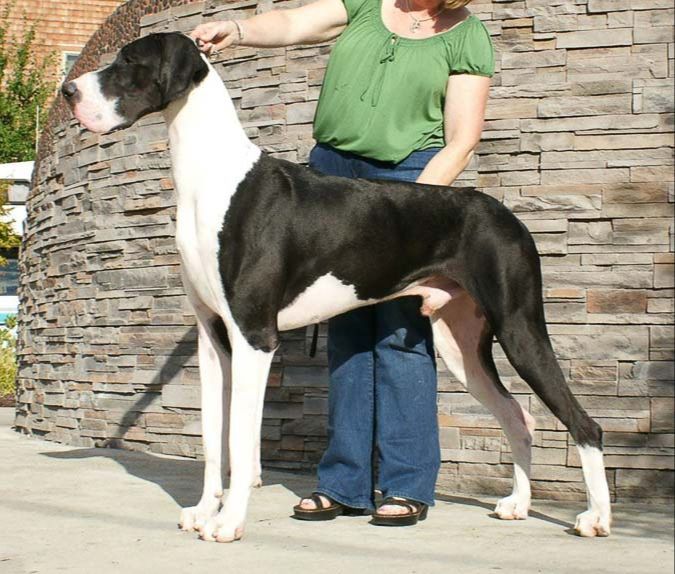
Great Danes come in a variety of colors and patterns. Some of the most common coat types and colors include:
Fawn – This is a light golden brown color. It can range from a light cream to a deep reddish brown.1
Brindle – This features black stripes over a fawn background. The stripes can vary in thickness and spacing.
Black – This is a solid black coat with no markings. The black coat color is dominant.
Harlequin – This distinctive pattern has large black torn patches over a white background. It is one of the most identifiable coats of the Great Dane.2
Mantle – This features a solid black blanket over the body, with a white neck and chest. There may be white on the feet and tail tip as well.
Blue – This is a solid, even slate blue or gray coat color. It is a dilute of black caused by a recessive gene.
Temperament
The Great Dane is known for having an excellent temperament. They are typically very friendly, patient, gentle, and loyal [1]. Great Danes are often referred to as “gentle giants” because of their docile nature despite their massive size. They generally get along very well with children and make excellent family pets [2]. Their friendly temperament also makes them poorer guard dogs than some breeds. Great Danes are usually tolerant of strangers and do not typically demonstrate aggressive territorial behavior. They aim to please their owners and enjoy companionship. With proper socialization and training, the Great Dane can be an ideal pet in households with children, other dogs, and other pets.
Exercise Needs
Great Danes have moderate exercise needs compared to other large breed dogs. A 30-60 minute daily walk is usually sufficient for most Great Danes to meet their exercise requirements. However, puppies and young Great Danes often need more activity to expend their energy.
Daily walks are important for Great Danes of any age. These walks allow them to stretch their legs and get fresh air. Slow, leisurely walks are best for this breed, as their long legs can be prone to injury if they run excessively, especially on hard surfaces. Retrieving games in a fenced yard can also provide good activity without the impact of running on leash.
As giant breed dogs, it’s important not to over-exercise Great Dane puppies while they are still growing. Too much high-impact exercise can put undue stress on their developing joints and bones. Sticking to lower impact activities and monitoring for signs of fatigue is the best way to keep Great Dane puppies active while protecting their growth. Most Great Danes will settle down into a more relaxed routine as they mature out of the puppy stage.
While Great Danes do not typically require intense levels of exercise, each individual dog may have differing needs based on their personality and energy levels. Paying attention to their behavior and fitness can help determine if more or less activity may be beneficial. Overall, moderate daily exercise helps keep most Great Danes physically and mentally content.
Health
Great Danes are typically a healthy breed, but like all breeds, they are prone to certain health conditions. Some of the most common health issues seen in Great Danes include:
Lifespan: The average lifespan of a Great Dane is 6-8 years, though some may live to be 10 years old. Males tend to have a slightly shorter lifespan than females.
Bloat: Also known as gastric dilatation volvulus, bloat is a dangerous condition common in large, deep-chested breeds like Great Danes where the stomach twists and fills with gas. This can be life-threatening without immediate treatment.
Bone and joint problems: Elbow and hip dysplasia, osteoarthritis, and cruciate ligament tears can occur. Great Danes’ rapid growth may contribute to these orthopedic issues.
Cardiac disease: Dilated cardiomyopathy and mitral valve disease are not uncommon in the breed. Regular vet checkups to monitor heart health are important.
Cancer: As with all breeds, Great Danes are at risk for various cancers. The most common are hemangiosarcoma, osteosarcoma, and lymphosarcoma.
Eye conditions: Entropion, corneal ulcers, and progressive retinal atrophy can be seen in Great Danes. Regular eye exams by a vet are recommended.
Training
Proper training and socialization is key for Great Danes, especially when they’re puppies. Being gentle giants, Great Danes need to learn how to control their size and strength around people and other dogs from a young age.1 Focus on positive reinforcement techniques and set clear boundaries. Socialize them often to get them comfortable around new people, animals, places, and experiences.
Obedience training is highly recommended and should begin early. The basics like sit, stay, come, heel, and down are important commands for a Great Dane to master. Consider enrolling in a puppy obedience class for socialization and structured training. You can also work on obedience training at home using treats and praise as motivation. Establish yourself as the pack leader with firm, consistent commands and training sessions.
Housebreaking requires patience and consistency. Set up a regular feeding and potty schedule. Praise and treat your Great Dane for going potty in the right spot. Limit access to rooms until housebroken and crate train to establish a safe den space. Clean all accidents thoroughly with enzyme cleaner to remove the scent. With time and consistency, your Great Dane will learn to relieve themselves outside. Prevent indoor accidents by taking them out frequently, especially after meals and naps.
Grooming
Great Danes have minimal grooming needs thanks to their short, smooth coat. Occasional brushing is all that’s required to remove dead hair and distribute skin oils. Using a rubber curry brush or a tool like the Kong Zoom Groom brush once or twice a week will keep the coat shiny and healthy.
Great Danes only need bathing every few months or when they get especially dirty. Use a mild dog shampoo and thoroughly rinse out all traces of shampoo to avoid skin irritation. Take care not to get water in their ears while bathing. Gently wipe out the ear canals with a damp cloth to remove dirt and debris weekly.
Otherwise, simply trim nails as needed, brush teeth regularly, and check and clean ears of excess wax buildup. With minimal grooming needs, Great Danes are relatively easy keepers.
Feeding
Great Danes have some unique dietary requirements due to their large size and rapid growth rate. According to The Best Giant Breed Dog Food for Great Danes, adult Danes need between 2,500 to 3,000 calories per day. It’s important to choose a high-protein, moderate-fat diet with 350-450 calories per cup to meet their needs without causing them to gain excessive weight.
Since Great Danes grow so quickly, it’s essential to feed puppies high-quality large breed puppy food for the first year to 2 years of their life. Feeding adult food too early can lead to developmental issues. According to Feeding Great Danes, protein levels should be no more than 24% and fat levels between 12-14% for puppies.
Due to their deep chests, Great Danes can be prone to bloat. To reduce this risk, it’s recommended to feed them 2-3 smaller meals spread throughout the day rather than one large meal. Elevated food bowls and avoiding vigorous exercise around mealtimes can also help prevent bloat.
Finding a Great Dane
When looking to bring a Great Dane into your family, it is important to find a reputable source. Some options for finding your Gentle Giant include:
Adopting from a rescue is a great way to provide a home to a dane in need. There are many fantastic Great Dane specific rescues across the country, such as Great Dane Rescue, Great Dane Rescue of Northern California, and regional Great Dane rescues that work to match Danes with loving forever homes.
Responsible breeders who focus on health, temperament and breed standards are another option for finding a Great Dane puppy. Be sure to do your research to find breeders who do all recommended health testing and provide support throughout the puppy’s life. Reputable breeders want the best homes for their Dane puppies.
Finally, you may also be able to adopt a Great Dane through your local animal shelter or humane society. Shelters sometimes take in Danes who need new families. Connecting with shelter staff can help determine if they have any Great Danes available.
With patience and dedication, you can find your perfect gentle giant Great Dane through rescues, responsible breeders or shelters. The most important thing is finding the right fit for your home.

